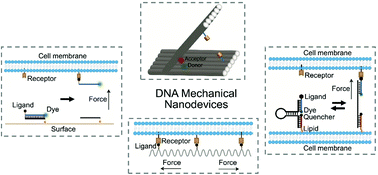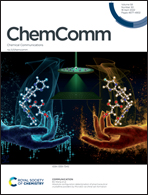Recent developments in DNA-based mechanical nanodevices
Abstract
Cellular processes and functions can be regulated by mechanical forces. Nanodevices that can measure and manipulate these forces are critical tools in chemical and cellular biology. Synthetic DNA oligonucleotides have been used to develop a wide range of powerful nanodevices due to their programmable nature and precise and predictable self-assembly. In recent years, various types of DNA-based mechanical nanodevices have been engineered for studying molecular-level forces. With the help of these nanodevices, our understanding of cellular responses to physical forces has been significantly advanced. In this article, we have reviewed some recent developments in DNA-based mechanical sensors and regulators for application in the characterization of cellular biomechanics and the manipulation of cellular morphology, motion and other functions. The design principles discussed in this article can be further used to inspire other types of powerful DNA-based mechanical nanodevices.

- This article is part of the themed collection: 2022 Emerging Investigators


 Please wait while we load your content...
Please wait while we load your content...